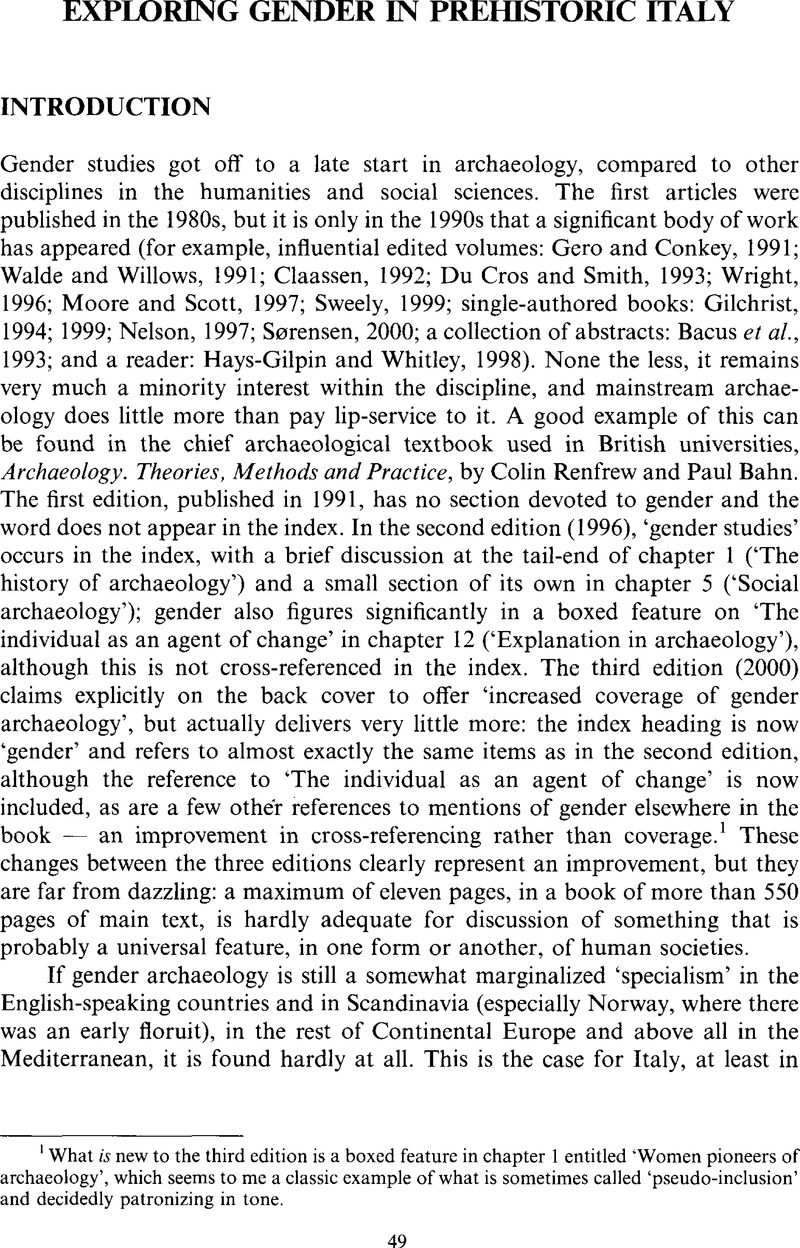Crossref Citations
This article has been cited by the following publications. This list is generated based on data provided by Crossref.
Hamilton, Sue
Whitehouse, Ruth
Brown, Keri
Combes, Pamela
Herring, Edward
and
Thomas, Mike Seager
2006.
Phenomenology in practice: towards a methodology for a ‘subjective’ approach.
European Journal of Archaeology,
Vol. 9,
Issue. 1,
p.
31.
Robb, John
2008.
Tradition and agency: human body representations in later prehistoric Europe.
World Archaeology,
Vol. 40,
Issue. 3,
p.
332.
Norman, Camilla
2011.
The Tribal Tattooing of Daunian Women.
European Journal of Archaeology,
Vol. 14,
Issue. 1-2,
p.
133.
Whitehouse, Ruth
2012.
A Companion to Gender Prehistory.
p.
480.
Shipley, Lucy
2015.
Leaping to conclusions: archaeology, gender and digital news media.
Antiquity,
Vol. 89,
Issue. 344,
p.
472.
Holt, Brigitte
Whittey, Erin
Niskanen, Markku
Sládek, Vladimir
Berner, Margit
and
Ruff, Christopher B.
2018.
Skeletal Variation and Adaptation in Europeans.
p.
91.
Garilli, Vittorio
Vita, Gerlando
La Parola, Valeria
Pinto Vraca, Massimiliana
Giarrusso, Renato
Rosina, Pierluigi
Bonfiglio, Laura
and
Sineo, Luca
2020.
First evidence of Pleistocene ochre production from bacteriogenic iron oxides. A case study of the Upper Palaeolithic site at the San Teodoro Cave (Sicily, Italy).
Journal of Archaeological Science,
Vol. 123,
Issue. ,
p.
105221.
Dolfini, Andrea
2020.
From the Neolithic to the Bronze Age in Central Italy: Settlement, Burial, and Social Change at the Dawn of Metal Production.
Journal of Archaeological Research,
Vol. 28,
Issue. 4,
p.
503.
Augereau, Anne
2021.
Funerary Practices as a Testimony of Ideology in Western Linearbandkeramik Culture.
Open Archaeology,
Vol. 7,
Issue. 1,
p.
953.
Augereau, Anne
2022.
In search of the origin of inequalities: Gender study and variability of social organization in the first farmers societies of western Europe (Linearbandkeramik culture).
Journal of Anthropological Archaeology,
Vol. 66,
Issue. ,
p.
101413.



